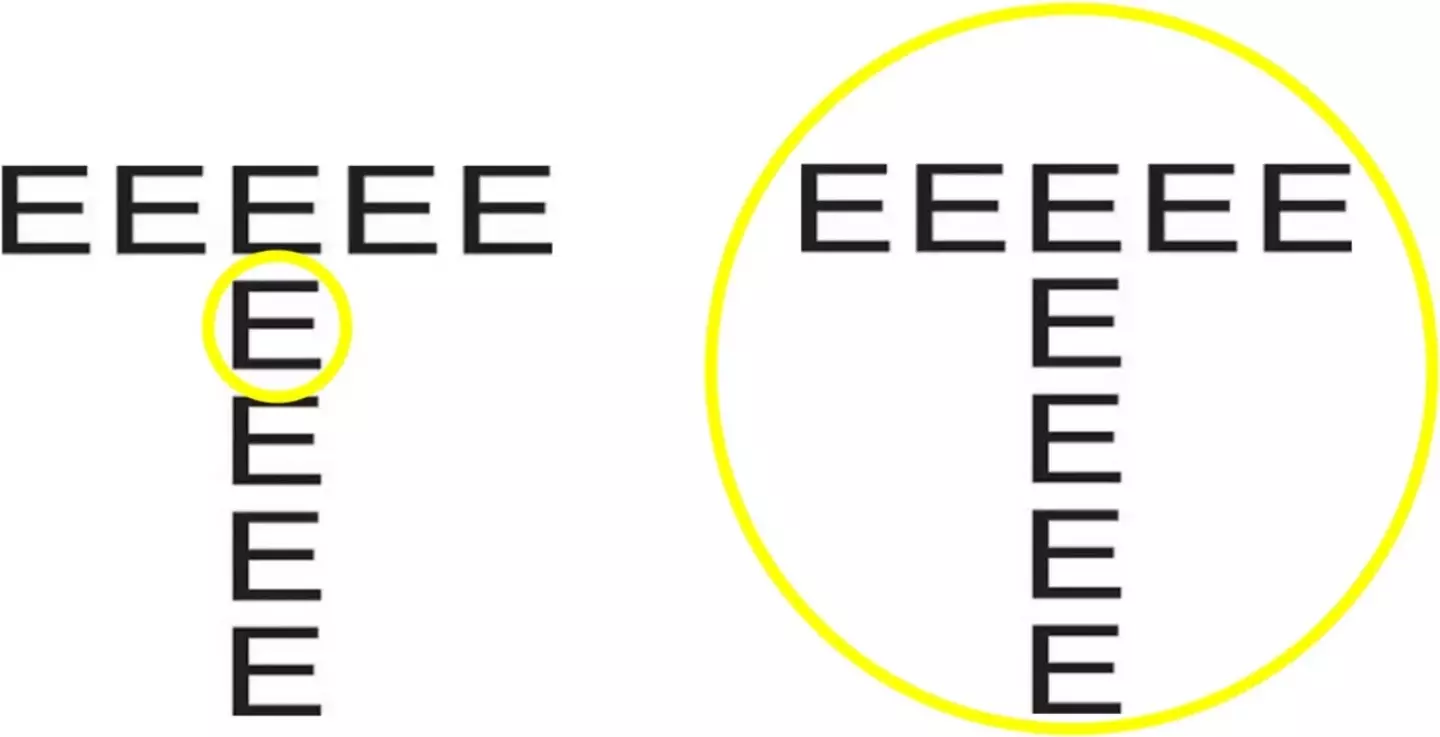A new study has used a test that can help identify a key trait seen in psychopaths - and it is remarkably simple.
While you might think of a few classic dramas or thriller film characters when you hear the word psychopathic, they are considerably more common in real life.
Just like many things regarding mental health, there are many tests which indicate whether a person has psychopathic tendencies or traits.
Thankfully, it is more than possible to exhibit psychopathic traits without being an actual psychopath.
A new study conducted by Stephanie C Goodhew and Mark Edwards, two psychologists at the Australian National University in Canberra, asked volunteers to take a test to see their particular tendencies.
The process is simple enough and saw 236 volunteers aged between 18 and 40 participate via computer to undergo a test that involved looking at large letters made up of lots of little letters, known as the Navon test.

What did you see first hmm? (Personal and Individual Differences)
For example, a big 'T' would be made up of little 'Es'. They were then asked whether they noticed the bigger letter or smaller letter first.
Interestingly, those who scored highly for having psychopathic tendencies found it more difficult to regulate their focus of attention.
While they may have struggled to notice the finer details, they were rather good at seeing the bigger picture.
The traits the researchers were looking for regarding being a psychopath were antisocial behavior, egocentricity and callousness.
According to a Sun report, the volunteers’ psychopathic traits were measured using the Levenson Self-Report Psychopathy Scale (E-LSRP) - a questionnaire consisting of 26 statements participants have to agree or disagree with.

The study was looked at three key traits seen in psychopaths (Getty Stock Image)
Based on their research, the team concluded that the tendency to see the bigger picture might only apply to psychopaths who have a strong tendency for anti-social behavior. They could find no noticeable links between two psychopathic traits – egocentricity and callousness – and attentional expansion or narrowing.
Study authors Stephanie Goodhew and Mark Edwards, both associate professors at The Australian National University who co-direct the Visual Cognition Lab, spoke about the complexities of researching psychopathy.
Speaking to PsyPost, they said: “There are multiple dimensions of psychopathic personality traits, including egocentricity, callousness, impulsivity, and antisocial behavior.
"There is substantial diversity in the degree to which people exhibit these traits.
“We are interested in understanding the psychological mechanisms and processes that underpin these individual differences."


















 English (US) ·
English (US) ·